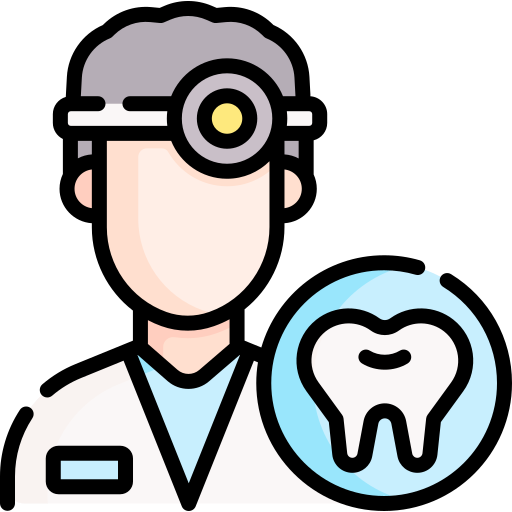Wanting to get invisible braces in Rajahmundry?
Invisible braces are transparent trays made of special material which are used to straighten teeth just like braces. They use gentle and constant force to move the teeth in the required position without going through the hassles of metal wires and brackets. They are custom made for each patient through a digital scan.
We're Trusted By Your Neighbours & Friends
Positive Reviews Across Google & Facebook | 5 Star Rating
Read why our patients love us. We go above and beyond to deliver upon our promise of quality and care.
When do you need
Invisible Braces?
Clear aligners (including such brands as Align Technologies’ Invisalign and Clear Correct) are a series of clear, removable aligners custom-fit to your teeth to provide virtually irritation-free treatment with minimal adjustment discomfort. Clear aligners are nearly invisible, minimally invasive and resistant to clouding from wear. With clear aligners, there are no brackets to come off or wires to break and poke. Clear aligners can be removed for eating, drinking and special events, making it easier to brush and floss.
Invisible Braces are required in the below-mentioned scenarios;
- Management of disordered teeth
- Correct overlapped teeth
- Align uneven teeth
Meet Your Doctor
Dr. Suseela Karri
A graduate from DRS S&NR SIDS, Gannavaram (2011, august) & post graduate in Dept. of Conservative Dentistry & Endodontics (2018, May) from vishnu dental college, Kolkata.
Well versed in the newest technologies related to RCT like use of hand & rotary NiTi file systems & restorations mandatory for a successful treatment.
Specialized in the field of micro dentistry, laser dentistry & aesthetic dentistry.

Why Radha Krishna Dental Care

Experienced Doctors
Our expert knows well how to treat a patient considering their comfort.

Cost Effective
The payment method for dental procedures is designed considering our patient’s ease.

Best Dental Care
We are committed to in-depth dental care solutions to our patient’s concerns.

Covid Safety
Our clinic's topmost priority is safety and hygiene. Our dental chair and all other places and equipment are sanitized after every patient.

It is all About the Patient
Dental procedures are performed keeping the patient’s concern on the top of the mind.
FAQ
Everybody wants a great smile, but a lot of us need help getting there. More and more people are having success with clear orthodontic devices called aligners.
Braces use brackets connected by wires to encourage teeth to move. Aligners are a series of tight-fitting custom-made mouthpieces that slip over the teeth. Invisalign is the largest producer of clear aligners, but it’s not the only brand. Others include Clear Correct, Inman Aligner, and Smart Moves.
Clear (or "invisible") aligners aren't for everyone. Your orthodontist or dentist will help you decide what’s best for you. Ask them if they have experience treating people with aligners. Get references or before-and-after images of their patients
Because the invisible aligners are custom-built for a tight fit, they are best for adults or teens. Straightening a child’s teeth is more complicated. Young people, and their mouths, are still growing and developing; the doctor must think about this when setting up treatment.
Clear orthodontic aligners are typically used for patients who have mild or moderately crowded teeth, or have minor spacing issues. Patients who have severe crowding or spacing problems -- or severe underbites, overbites, or crossbites -- may need more complex treatment.
Types
Popular types of invisible braces include ceramic brackets, inside braces and clear aligners. Ceramic braces are just like metal braces, except that they use tooth-colored brackets (and sometimes tooth-colored wires) rather than metal to straighten teeth. Generally non-staining, the tooth-colored ceramic “blends” with your teeth, making them less noticeable than metal, but not as “invisible” as inside braces or clear aligners. Inside braces — also called inside invisible braces, lingual braces or “iBraces” — and clear aligners go one step further, making treatment virtually invisible. Each alternative has its advantages and disadvantages.
“Ceramic, or “clear,” braces are made of composite materials that are weaker and more brittle than their metal counterpart. Ceramic brackets are larger than metal brackets and require small rubber bands, or ligatures, (or built in spring clips on “self ligating” brackets) to hold them to the arch wire. Because the ligatures are white or clear, they can stain. However, staining is not a big problem because ligatures are changed every time you get an adjustment (generally monthly). The “self ligatiing” clips do not require retying with wires or elastics.
Also like metal braces, ceramic brackets are not removable until treatment is completed, can produce irritation and discomfort, and may complicate regular tooth care, eating and speaking.
Because they are not as strong as metal braces, clear braces require a longer treatment time, since your orthodontist may need to apply a slower, more gradual force to ensure the strength capabilities of the clear brackets are not overtaxed. Ceramic brackets also are usually more expensive than traditional metal brackets (about $500 more). As a cost-saving measure, some patients may opt to have ceramic braces placed only on the most visible teeth — typically the upper teeth or just the upper center teeth — while using traditional metal brackets on the remaining teeth that need straightening. Also, there is some possibility of tooth abrasion if the incisal edges of the upper front teeth touch the lower ceramic brackets.
Inside braces (including such brands as 3M’s Incognito Orthodontic Braces) are attached to the back of the teeth so they are hidden from view. Current iBraces use scanned images of the insides of the teeth to create special, computer-designed custom brackets that are attached to the insides of the upper and sometimes lower teeth. This makes them appealing to people who are often in public and might feel self-conscious about wearing clear aligners or braces with metal or ceramic brackets/wires on the front of their teeth. Whereas clear, removable aligners can be misplaced or lost, thereby delaying treatment, iBraces are fixed and not removable. Elastics can be used with iBraces to help hasten treatment. Such elastics are available for use with clear aligners but are more difficult to use.
Disadvantages of iBraces include a higher cost than traditional braces used on the front of the teeth due to the computer customization required to make the brackets. Since computer manufactured iBraces represent a newer technique, many orthodontists are not comfortable or experienced in performing invisible braces treatment and, therefore, shy away from offering them as a treatment plan. Speech, comfort, maintaining dental hygiene and removing dental plaque may pose challenges with iBraces.
Clear aligners (including such brands as Align Technologies’ Invisalign and ClearCorrect Inc.’s ClearCorrect) are a series of clear, removable aligners custom-fit to your teeth to provide virtually irritation-free treatment with minimal adjustment discomfort. Clear aligners are nearly invisible, minimally invasive and resistant to clouding from wear. With clear aligners, there are no brackets to come off or wires to break and poke. Clear aligners can be removed for eating, drinking and special events, making it easier to brush and floss.
Invisible braces cost depends on factors like Orthodontic doctor’s expertise, facilities required to perform treatment, efforts involved in teeth alignment.
Invisible braces cost or Invisalign braces cost may go much higher compared to traditional braces. Invisible braces cost in Rajahmundry or Clear aligner cost in Rajahmundry is affected by factors like clinic’s operating years of experience, the location, dentist’s expertise, complexity of the case, type, duration of treatment and restorative work needed throughout the treatment.
Teeth aligners cost depends on the braces selected, resources involved in performing the procedure, dentist’s expertise and clinical expertise involved.


